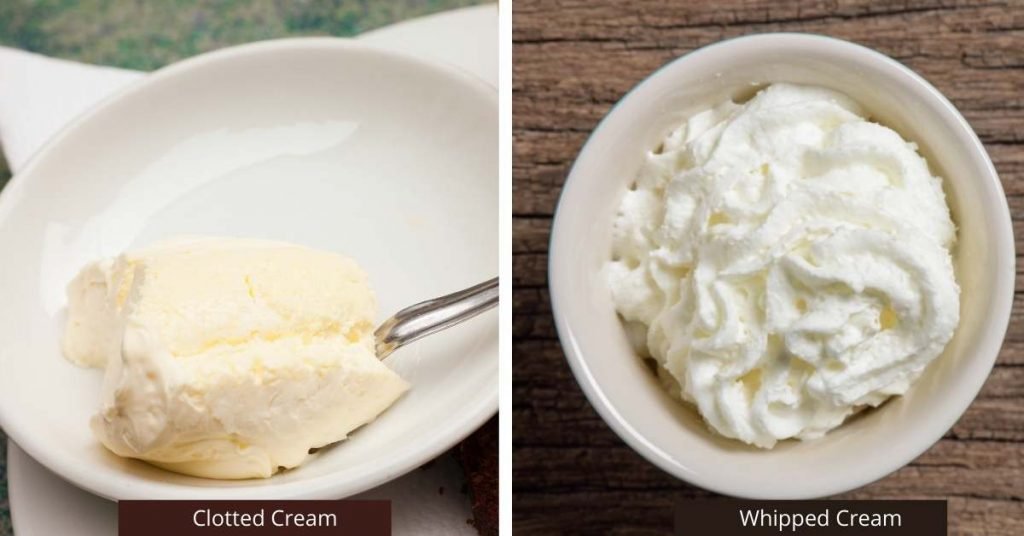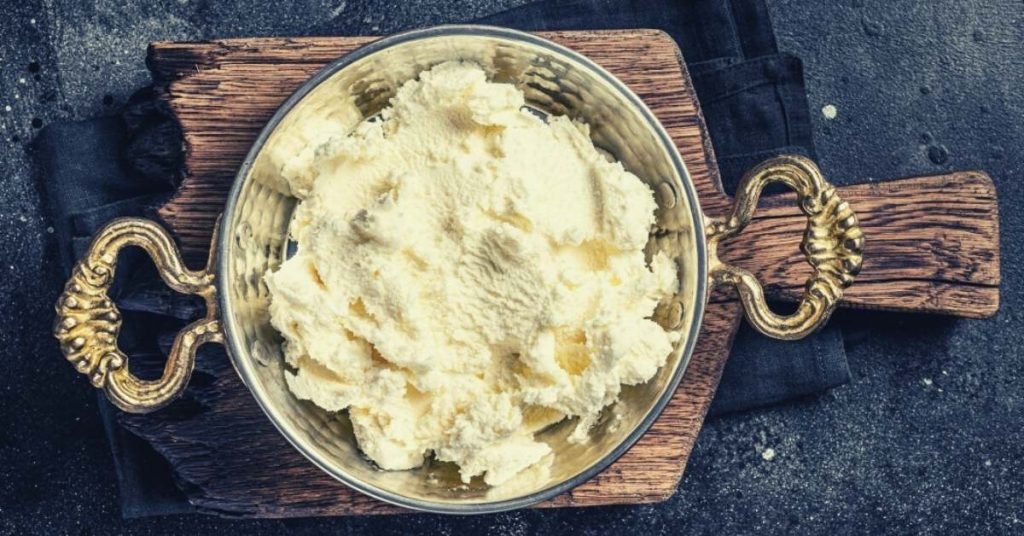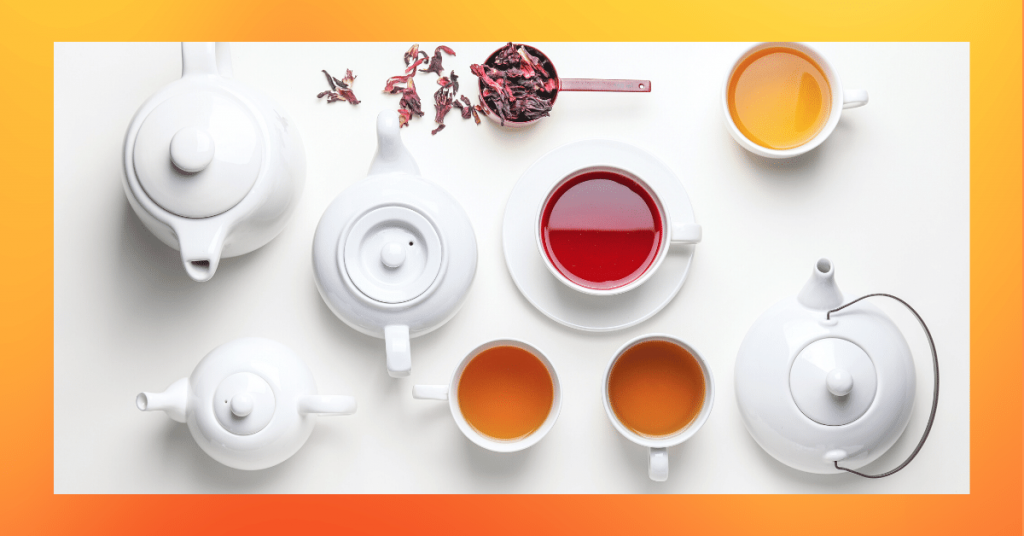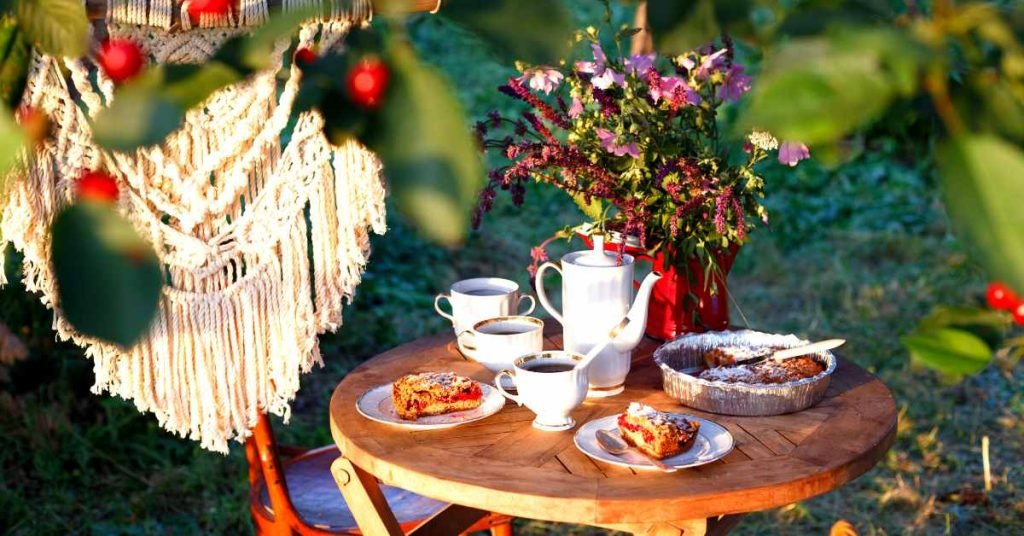A crusty foundation eagerly awaits as the vessel that will cradle the schmeering of heaping spoonfuls of luxurious creamy goodness. To sandwich or not to sandwich a delicious dollop of fruity sweetness remains contested.
What Is Clotted Cream?
Clotted cream is a milk-based product of the U.K. It is processed, packaged, and goes on to be enjoyed on scones served with tea (which is known as ‘cream tea.’) Scones, tea, and clotted cream are iconic of British tea culture.
Clotted cream hails from Devonshire or Cornwall in southern England. There’s been a longtime debate between the two areas about the order in which clotted cream and jam are layered on a scone.
How Is Clotted Cream Made?
Clotted cream is produced in the U.K. commercially, by farmers, and by those seeking to have some to enjoy with scones. Large and small-scale commercial production uses separating machines to extract milk fat from milk. Once the milk fat content reaches 55%, the cream is poured into containers and goes on to be chilled in a cooler for 12 hours.
During the chilling, the milk fat rises to the top (also known as clotting.) Next, the containers are heated in an oven until a nice crust forms on the surface. They are removed from the oven and allowed to cool. Beneath the crusty topping is the milk liquid.
Some producers opt to package the containers at this point and send them off to market. Others skim the crusty, thick top off, leaving the milk liquid behind. The skimmed topping gets packaged and sent to market.
What Does Clotted Cream Taste Like?
Clotted cream on its own is similar to butter. Is clotted cream sweet tasting? It is subtly sweet and not overpowering. It has the texture of butter or ice cream and tastes like whipped cream.
Here in the U.S., heavy cream contains 36% milk fat. The milk fat content of fresh, authentic English clotted cream tops out at about 64%. It’s no wonder English clotted cream is so scrumpcious!
What’s The American Equivalent To English Clotted Cream?
What we know as butter or whipped cream is as close to the real deal as we’ll get unless we travel to the U.K. to enjoy it.
What Is The Difference Between Whipped Cream And Clotted Cream?

Whipped cream is produced by whipping heavy cream until it develops stiff peaks. Clotted cream has a much thicker, dense texture because of how it’s processed. As for taste, both have similar tastes but very different textures on the palate.
What’s The Difference Between Butter And Clotted Cream?
Butter is made by whipping heavy cream until it reaches a solid texture. This solid is high in fat content. Clotted cream is not whipped but gently baked, and it does not have a solid texture but rather a crusty topping with a creamy, pudding-like bottom.
Where To Buy Clotted Cream In The U.S.
Unfortunately, there is nowhere to purchase fresh authentic English clotted cream. Instead, U.S. residents must rely on making their own or buying jar versions of the cream imported from England.
How To Make Clotted Cream
Making clotted cream isn’t as hard as many may think! All it takes is a good recipe and a few ingredients. Making your own clotted cream substitute is just as good as having genuine Devonshire or Cornish clotted cream.
Clotted Cream Recipe
The key to making clotted cream is to find heavy cream that is not ultra-pasteurized. Heavy whipping cream and heavy cream are the same.
Things You’ll Need
- 4 cups of pasteurized (not ultra-pasteurized) heavy cream
- 5×7 glass baking dish
- 4 individual ramekins (or jars) with lids
Directions
- Preheat the oven to 180 degrees (F) (85 degrees C.)
- Fill the baking dish with enough heavy cream to a depth of 2 inches.
- Place into the oven and cook for 12 hours. Do not disturb the cream during baking.
- Remove from the oven and allow it to cool to room temperature.
- Skim the top thickened layer and spoon it into individual ramekins/jars.
- Place the lids on the ramekins/jars and refrigerate.
- Enjoy over the next 3-4 days.
- Discard any remaining clotted cream after day 4.
Clotted Cream Is A Real Treat!
Why settle for whipped cream or butter on a scone when you can have the real deal? Cream tea would cease to exist if it were not for the spoonful of luscious creamy indulgence that completes a scone with a cup of tea.
MEDICAL DISCLAIMER
Itsnevernotteatime.com cannot and does not contain medical/health advice. The medical/health information is provided for general and educational purposes only and is not a substitute for professional advice.




